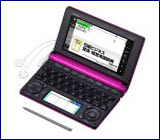- Home
- Learn Japanese Language FAQ
- Which hiragana character to use for dakuon chi and shi?
Which hiragana character to use for dakuon chi and shi?
by Carolyn
(Or, USA)

Which Hiragana Character to Use? ぢ or じ
(hiragana) when you have dakuon to "chi" and "shi", when writing a word using the sound "ji", how do you know which character to use if you don't know how the word is even spelled? (beginner)
I am using a self teaching book on how to learn Japanese. The first book teaches me hiragana, I am at a point in the book where I am learning dakuon. And when dakuon is applied to "chi" (ち) and "shi" (し) both characters make the sound "ji".
So for when the book asks me to take a romanazised (or is it rojimanazised?) Japanese word and write it using hiragana with the word involving the character "ji", how do I know which character to use?! (ぢ) or (じ)
Reply:
Hi Carolyn, in modern Japanese, the dakuon for "chi" (ぢ) is rarely used. In most cases, you can be sure that the dakuon of "shi" (じ) is being used. (both are pronounced as "ji")
There are only very few cases where ぢ instead of じ is used:
1. When you are using a 連濁 (れんだく - rendaku: euphonic change of unvoiced to voiced sound). That means, when you are connecting 2 nouns together, the second noun will need to take a dakuon. For example,
a) Nosebleed (鼻血 - はなぢ)
Hiragana of nose is はな, hiragana of blood is ち. When you connect the 2 words, you need to apply dakuon to the second noun (in this case ち). Therefore it becomes はなぢ
b) Close, near, familiar (身近 - みぢか)
Similarly for the above 2 connected words, you need to apply dakuon to the second noun 近 (ちか) and the resultant word becomes みぢか.
2. When there are 2 continuous "chi" (ち) used in a single word, you need to apply dakuon to the second "chi" (ち). For example,
a) Shrink (縮む - ちぢむ)
b) Curl up (縮れる - ちぢれる)
Both the above verbs contain 2 continuous "chi" (ち), so you need to apply dakuon to the second "chi" (ち).
However, these 2 cases are very rare situations where dakuon of "chi" (ぢ) is being used. Most of time, you can assume the dakuon of "shi" (じ) is the correct one, unless you see the above 2 cases.
Hope this helps,
Kia Leng
Related Page
Refer to this page for Hiragana chart.
Comments for Which hiragana character to use for dakuon chi and shi?
|
||
|
||
|
||








